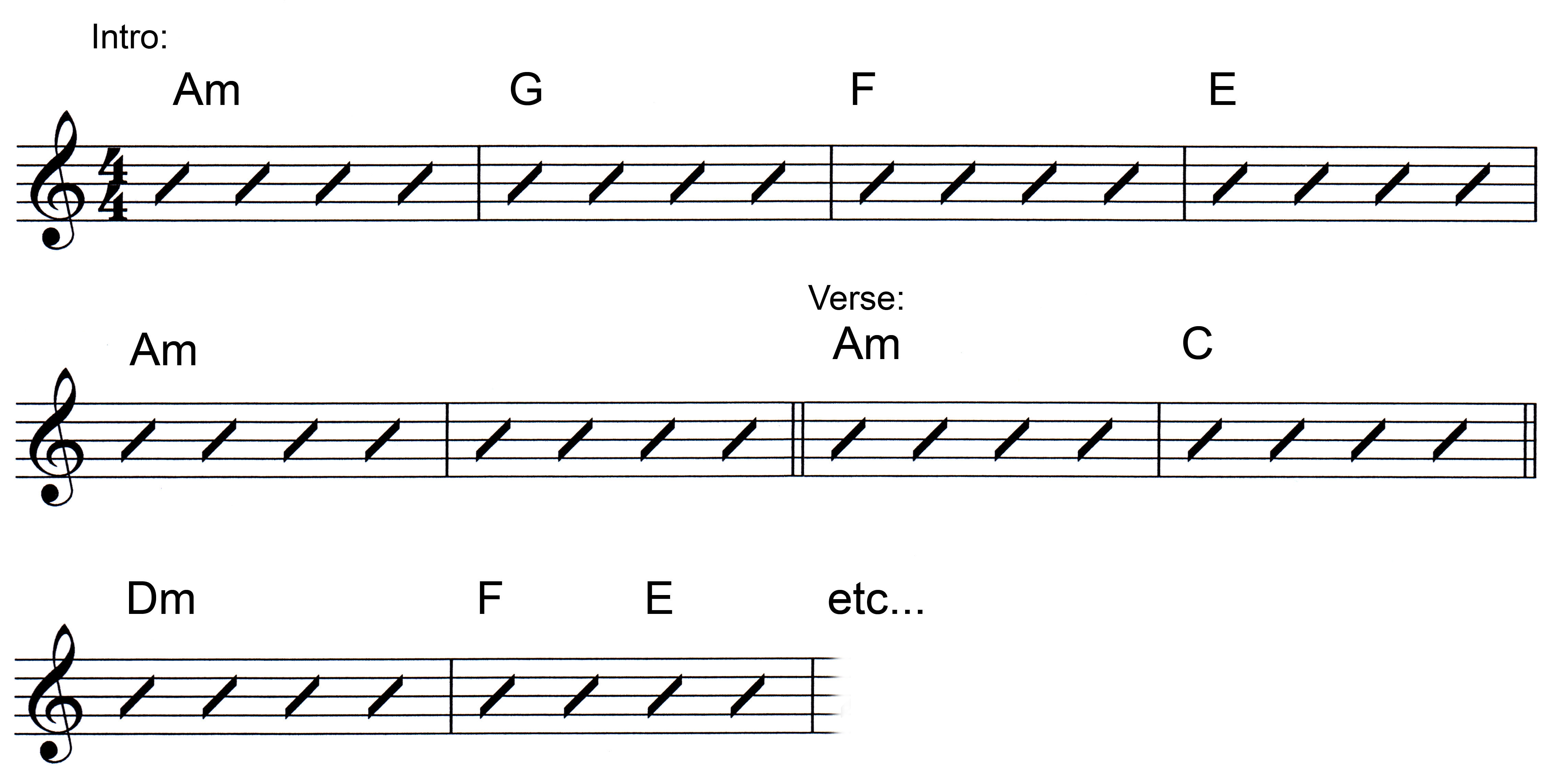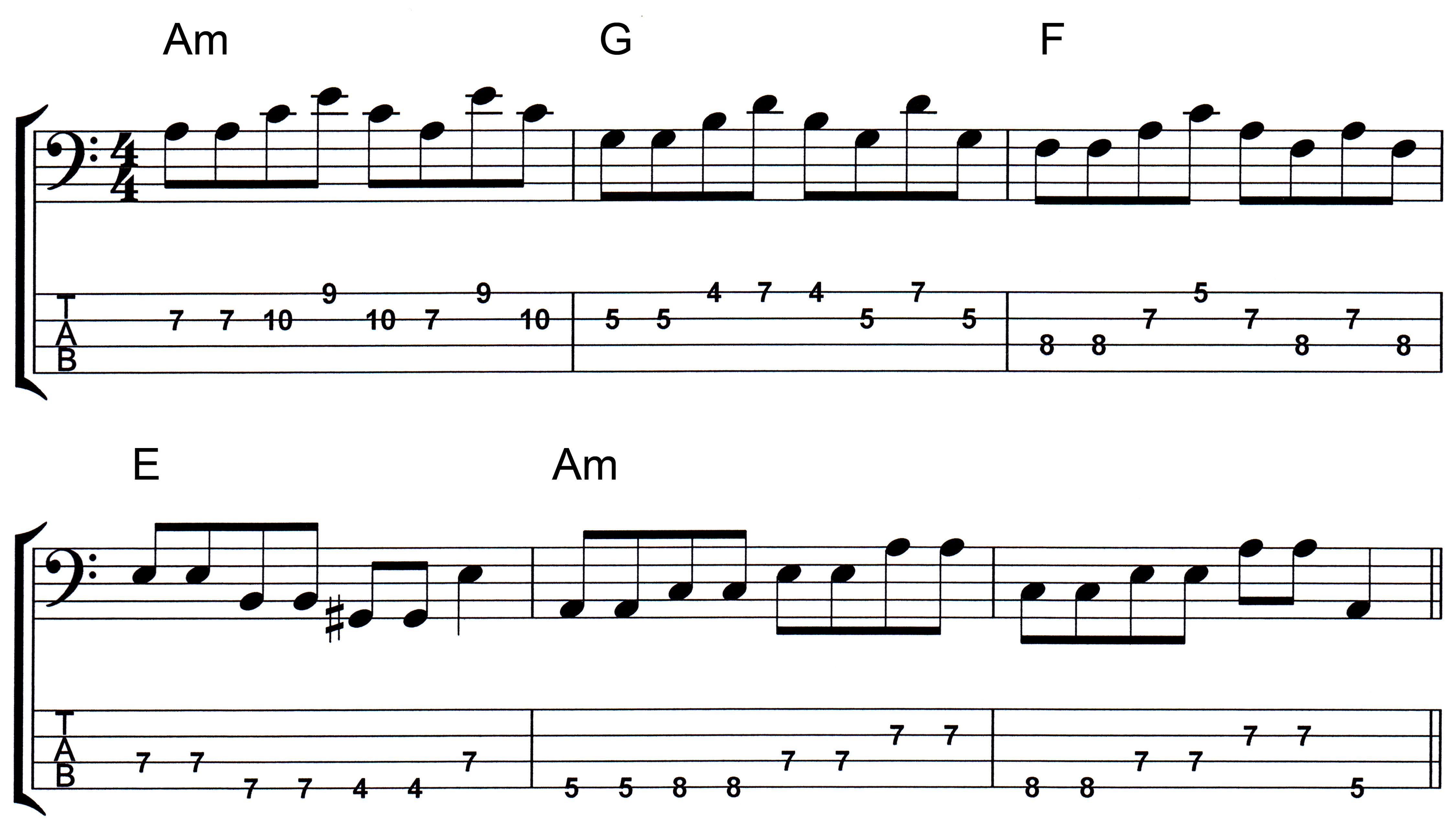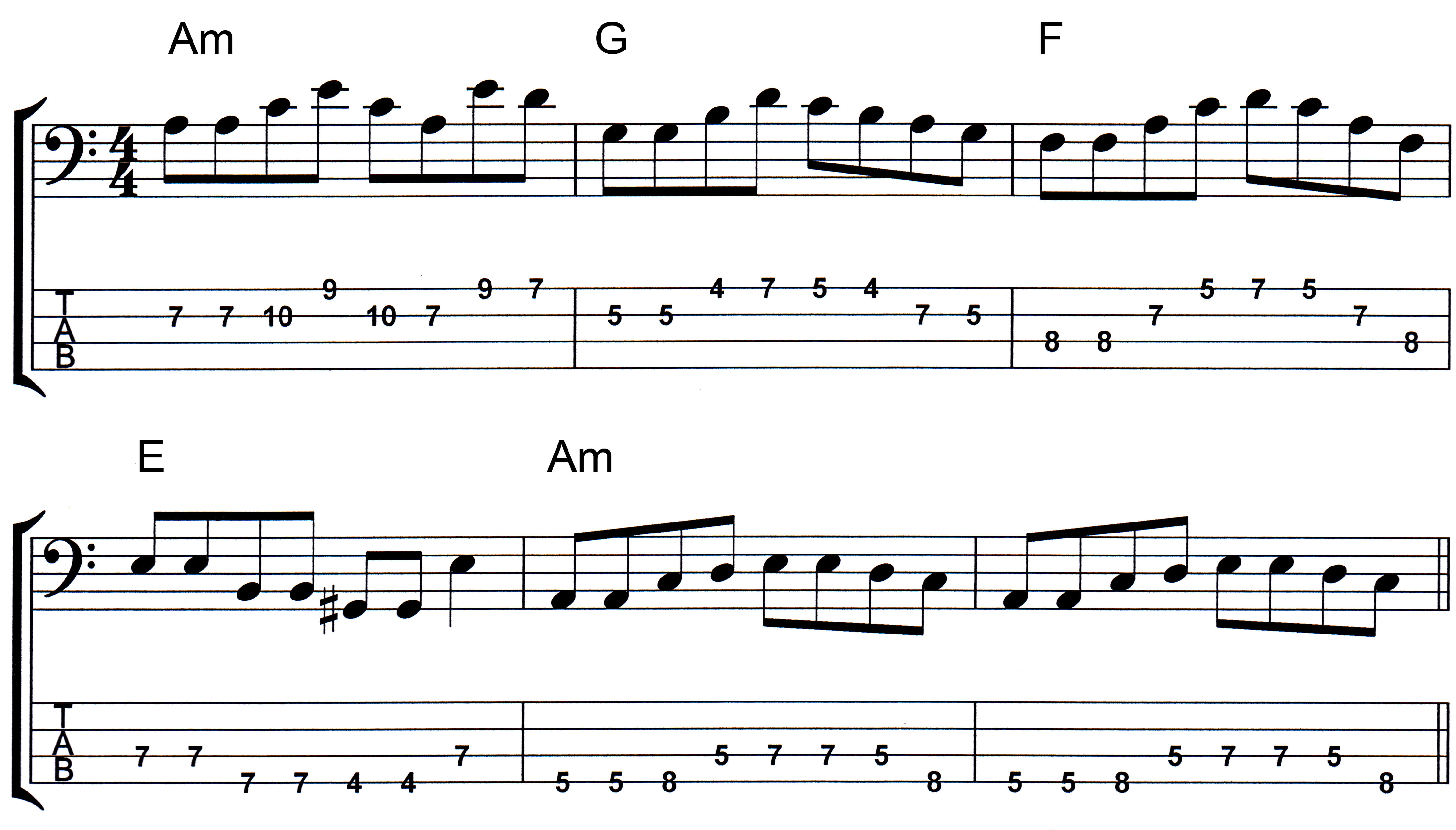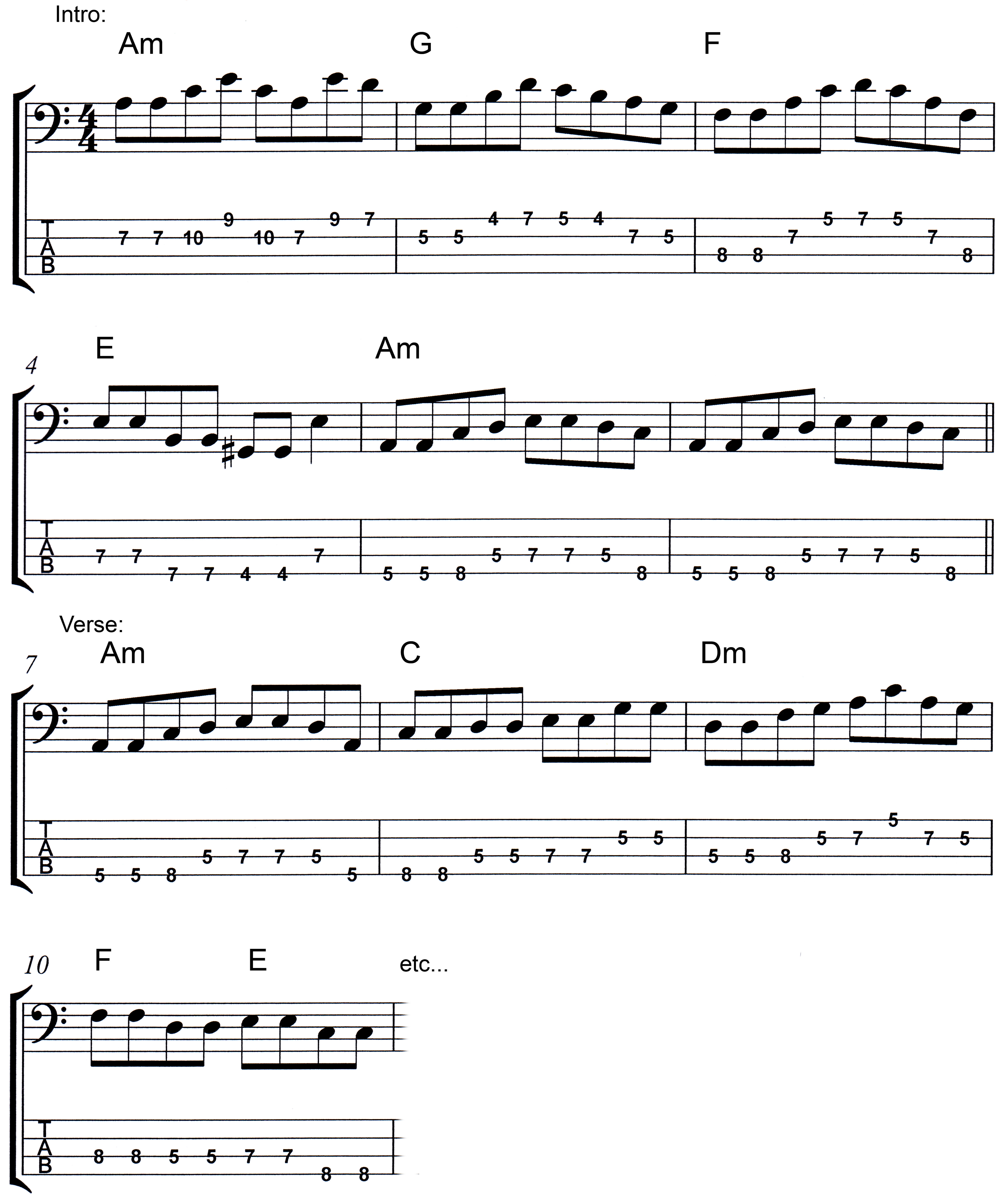
Creating Bass Parts From Chord Charts
We all know how easy it is to thrum away on a root tone, even a root-five tone pattern under a chord, particularly in up tempo rock stuff. You just follow the root of each chord involved. It's safe, easy and doesn't generally interfere with the flow, the chord voicings or the vocal melody lines.
But it's boring, I mean boooooooorrrrrriiiiiinnnngly boring; yawn inducing, wish I were anywhere but here, except that playing music is better than anything else I do, boring. And it's just not much fun after a while. And all the songs just melt into one big long same-sounding morass of unsatisfying.
So, then, you are a player, don't really know much yet, but are learning. What do you do when you have a chord chart (or lead sheet, which shows chords over a melody line), but no direction about what you're supposed to actually play. The assumption is a) you learn the bass part if it's a known song by a known artist, or b) you have to make something up... sometimes on the spot.
Well "a" is easy, you listen to the bass part and learn it by ear, usually. But "b" is not so simple when you're not yet well versed on your bass. How do you go about creating something that works, that sounds good? We're going to make one assumption here: somebody in the band/jam situation knows the tune, having written it or played it before.
First things first, you have the guitar or keyboard player run through the A section (intro and verse section) and get a sense of what they're doing. You follow along on the chart to see the flow, maybe even just playing the root tone and holding it for the duration of each chord. This gives you a sense of where on the fret board you might wish to play.
Okay, so far, you're following the idea, and getting a sense of it. And you're learning what the style of music is for the tune. Again, for the sake of simplicity, let's assume a mid tempo rock tune.
Let's create a chart to help you visualise this. Here is an intro and verse, the A section of our "song", in A minor.

Now, the thrumming away on straight-eighths thing may be appropriate for the verse, but not the intro section. So you have to look at the chords in the intro section:
Am, G, F, E
Looks easy enough, and may even be an obvious thing to do. But what are the notes of the chords? THAT is the first thing you need to know and understand.
For the first thing, you can ask your guitar/keyboard player to play the notes of each chord so you can find them on the fret board. But we'll do the work for you here:
You should be familiar enough with your fret board by now to know where these notes live. If not, then this is a "hole" in your knowledge you have to fill. Assuming you got this (or have a fret board chart), find the notes of each chord, wherever they are on the neck. Remember, you're in A minor, so the obvious place is at the 5th fret of the fourth string for your root tone. Work in that general area.
Next, you want to create something interesting to play in support of the rhythm, which we'll keep simple and make a driving eighth note feel for the guitar part. So you might come up with something like this for an intro
section lick:

Notice that only the notes for each chord are being used, no additional notes are employed - just chord tones.
Now, using only chord tones can be just fine. But let's go beyond this and add the second thing you need: a workable scale. So, what scale works over these chords? If you don't already know, ask the guitar/keyboard player. He will most likely tell you the Pentatonic minor scale. You ask, "What is that?", and he either kicks you out of the band or extends a little grace and shows you, knowing you aren't well versed yet - but wanting to learn.
Okay, so the Pentatonic minor scale - in A would be the following:
A, C, D, E, G
Find the notes, play the scale in multiple positions to learn where they all sit in proximity to the 5th fret and the root tone, A, where you are working.
So, now you can create a bit of colour in your bass part with the addition of scalar notes to help give your part some motion, make it more fluid between chords. You might modify your part in the following way:

As you can see, the part now has a lot more life. Chord tones are present, too. We didn't change everything because you don't have to when a bit sounds cool, like the part under the E chord. And now the A vamp in the final two measures really has some motion to it, and will lead you right into the verse by keeping that groove going until the next chord change.
So now we get to the main body of the song, the verse.
As you can see, there are two chords to be added in:
Again, you can flow into the verse using the riff from the end of the intro, but with a slight modification, and then thrum away on straight eighths for the rest of it, if you wish. But, let's depart from that approach, even though it would have a lot of driving power behind it, and go for something a bit more melodic in nature...
We'll include the whole intro section as well...

Now, as you can see, there's a lot of movement going on in the verse section, and we touch on the root of the given chord right at the start of each chord in the sequence; this anchors the riff, re-enforcing the rhythm guitar part.
This is just one possibility. You can certainly alter this, experiment with it and, if you know the scale, adapt the pure minor scale in A to this as well. Be aware, the E major at the end of the progression requires you to alter your note choices, to accommodate this change. Without getting complicated, just use notes that work - you'll hear when they do not work! You already have an example in the intro section of what is possible over an E major chord.
This really just scratches the surface of the possibilities. But it gives you an idea of what you have to consider when you are creating parts from a chord chart. All you know about the tune is what's written - and that is not so much, just chords on a chart.
Remember a very important rule, too: Don't change things just because you can. Oftentimes simple things work far better than not. Do not fear the simplistic approach just because you know a ton of theory. There are a lot of famous players out there who have the education to write and play very complex parts. But they are listening to the song, not their intellect. Let the song help you learn what to play.
Okay, that's it for this session. Just remember to take your time. Once you better understand what you are doing, the easier it gets. Use your ears, use your brain, learn the things you require to be able to create the parts you want to play, that you hear other players laying down. Take the time to listen to players that do this. Analyze what they're doing, the notes they play under a given chord, any scale elements they include in their part. Learn, play, grow!TM
Next time!